A Do-It-Yourself walking tour of Antequera
We’ve lived in Antequera a year. I thought it was finally time to do a video/post on what to see in Antequera.
You’ll see the video we shot below. It goes over what you have to see in the city center. I’ve done a little map tracing your steps as you go along which I hope you find useful.
Below the video, I cover everything you’ve seen in more detail. I also cover a few additional places that should be visited if in Antequera more than a few hours.
Summarizing some of the main points on the video:
Start your tour at Puerta de Estepa. If you’ve come to Antequera by bus, it’s about 5 minutes from the bus station. If arriving at the Antequera AV train station, it’s about a 15 minute walk.
One of the 4 gates to the old city, the Puerta de Estepa was built in 1749 and was the entrance used by carriages coming from the direction of Seville.
In the 1930’s, the gate was demolished because it impeded road traffic into the city. But in 1998 it was re-built in replica of the original construction.
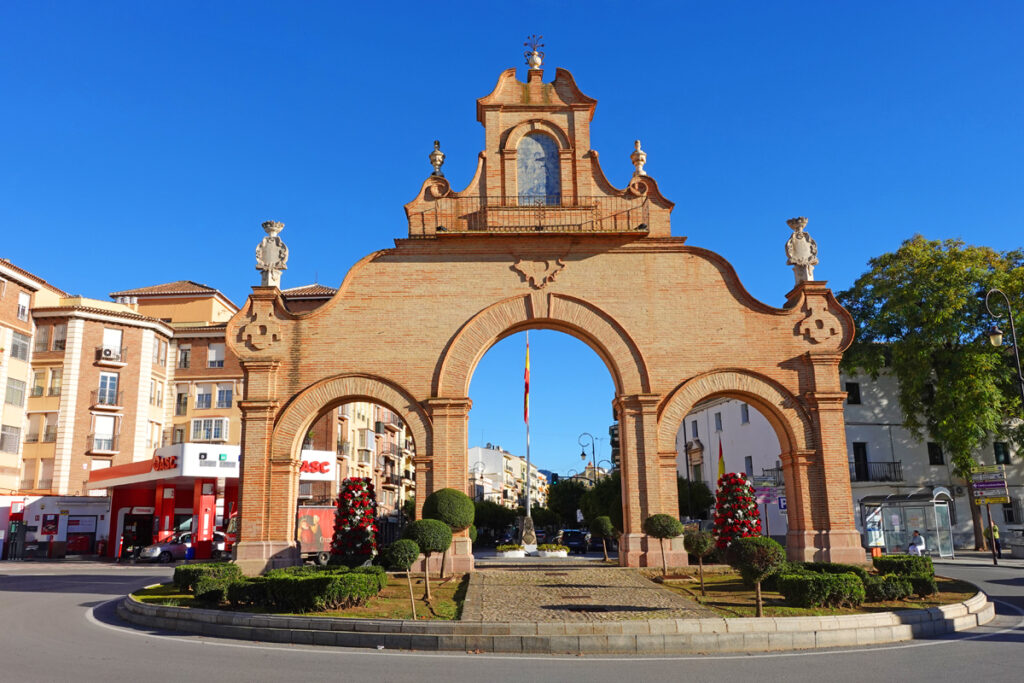
Next to the gate is the Plaza de Toros. There’s a café there and you can have a coffee/lunch in the bullring. Or you can just walk in and have a look. The bullring was originally built in 1848. Since the late 1900’s it’s been restored and improved upon. Some say it’s one of the most beautiful bullrings in Spain (I can’t confirm that. Haven’t visited enough bullrings). They still have bullfighting going on here.
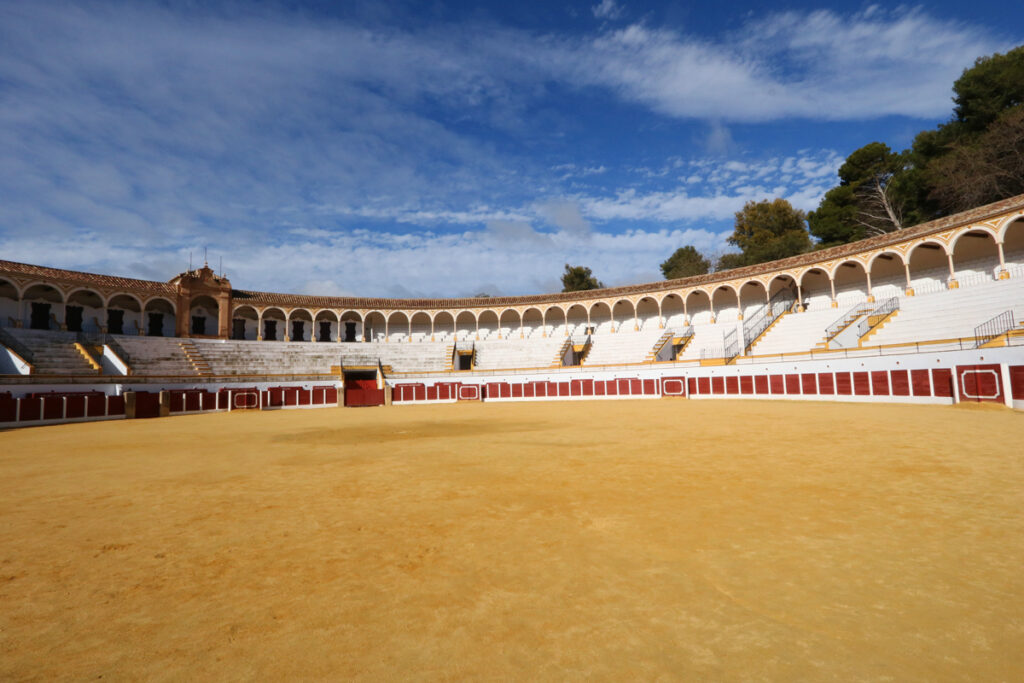
The main street, Calle Infante Don Fernando (yes, I know I destroyed the name in the video) is a pretty street with the nicest architecture in the city. Many of the city’s highlights are on the street.
Iglesia de San Juan de Dios
The first one you’ll come up to is Iglesia de San Juan de Dios which was built in the 17th century. Absolutely worth a visit and it’s free.
Detailed post on the church of San Juan de Dios here.
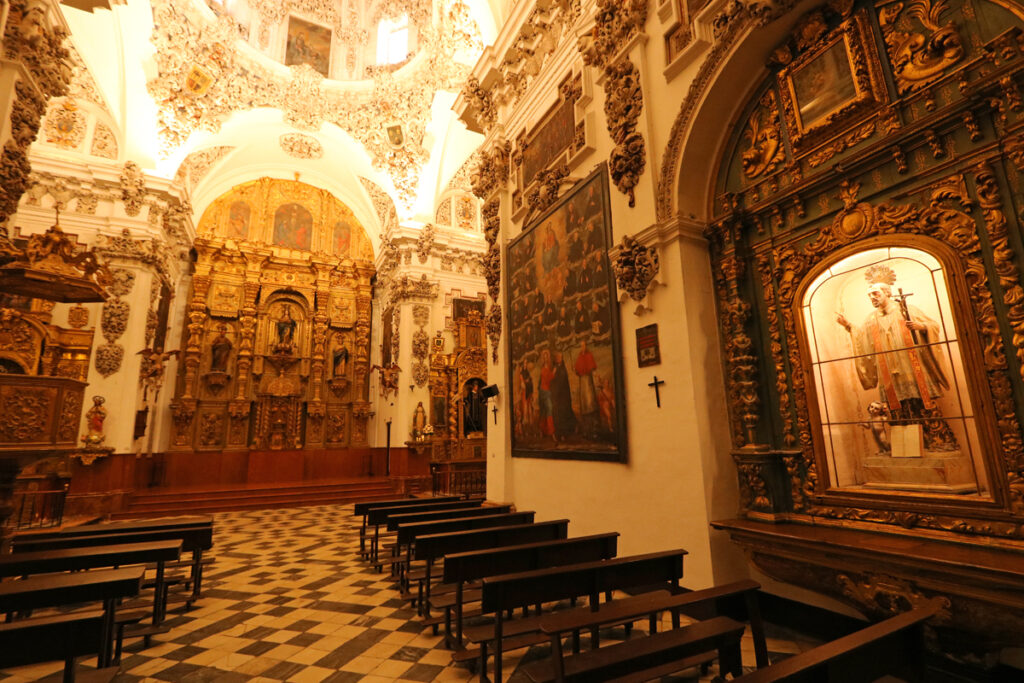
Iglesia de Nuestra Señora de los Remedios
A bit further up the street is what I think is the most spectacular church of Antequera: Iglesia de Nuestra Señora de los Remedios. It was built starting in 1628 and completed in 1711. Gorgeous.
Note: there are 34 churches in Antequera. Many are very impressive.
The church is usually open in evenings. Bring some coins because you have to put a euro in a box for the altar to light up.
Detailed post here on Iglesia de Nuestra Señora de los Remedios.
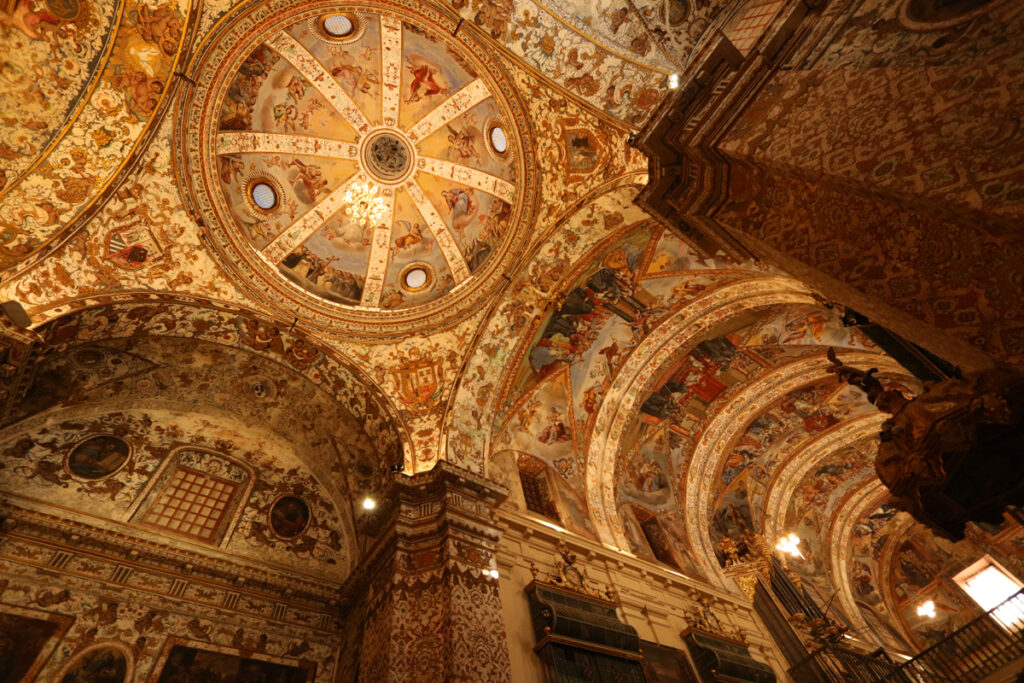
Ayuntamiento (Town Hall)
We’re very familiar with this building having come here to get paperwork done.
Right next to Iglesia de Nuestra Señora de los Remedios, Antequera’s town hall is in a beautiful old palace built in 1679. It has an impressive interior courtyard and the baroque staircase is the most impressive in Antequera. I love the beautifully tiled entrance – if you wander around Antequera you’ll see many beautiful entrances like this in the older buildings. It’s something that really stands out here.
It’s worth popping your head in for a look.
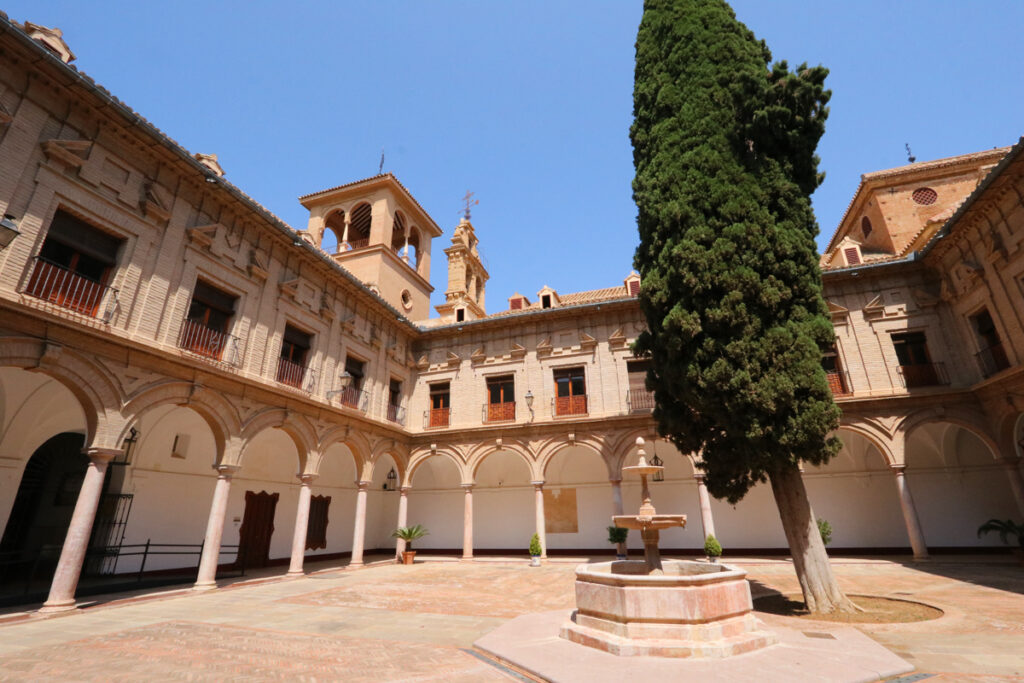
I mentioned in the video a couple of favorite little places to eat along this stretch:
Pastelería Cafetería Entre Torres. The owner and his wife are kind and the coffee is maybe the best in Antequera. We often have a sandwich or desert here.
Obrador Aldamira is an artisanal bakery down the street. Buy a loaf of their bread – it weighs a ton and is delicious. Some of the best bread we’ve had anywhere.
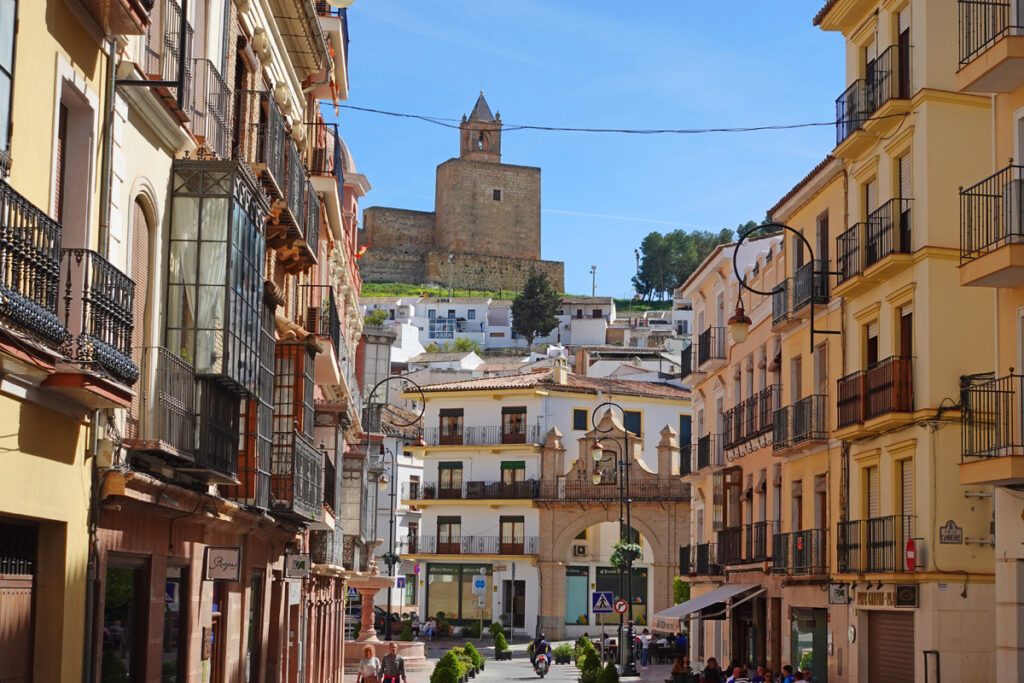
Plaza San Sebastián
A very pretty plaza, some great architecture here and the impressive Parroquia de San Sebastián. In July, they host the Festival de Luz in Antequera and they use the church as the screen for a light show. See it here.
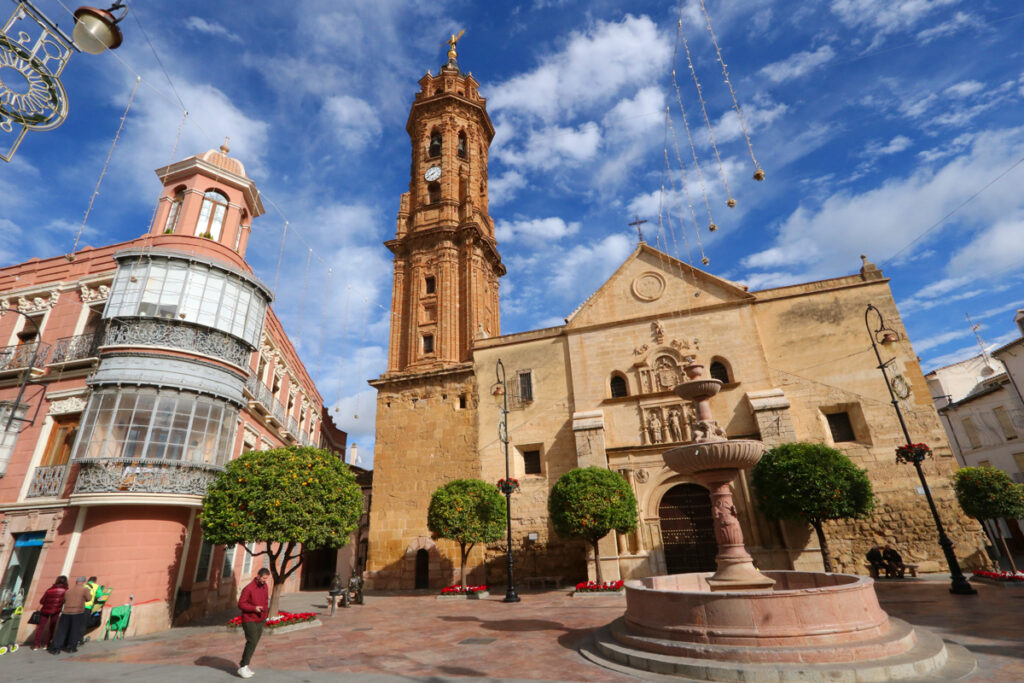
It’s the most known and most central plaza in Antequera. Everyone seems to end up here. Right across from the plaza is Loulu Bistro where every visitor goes (a bit pricier than most but it’s very good and the location can’t be beat).
Where to stay in Antequera: Hotel Manzanito is on the square and the place we stayed before finding our apartment.
Tourist Office
A very short walk down the street from Plaza San Sebastián is the Antequera tourist office. Antequera has an excellent tourist office with the nicest tourist map I’ve seen in Spain. Pop in here for a map or to ask any questions you may have. I’m including the map below, you can print it out if you wish.
Antequera tourist map. You can enlarge and print out if you wish.
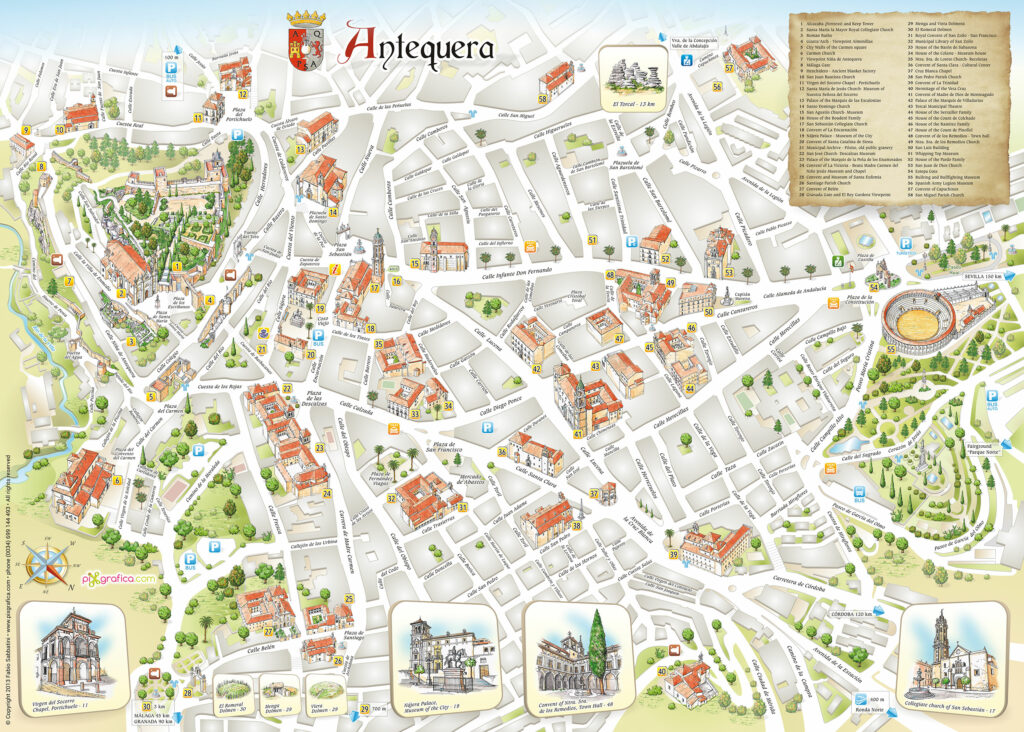
Plaza Coso Viejo
Just a few feet away is this Plaza. A beautiful plaza, you can see the Alzazaba rising above the city behind it.
The square holds Antequera’s city museum which is worth a visit. Lots of artefacts, Roman ruins and religious art. It’s free and the site (an old palace) is beautiful.
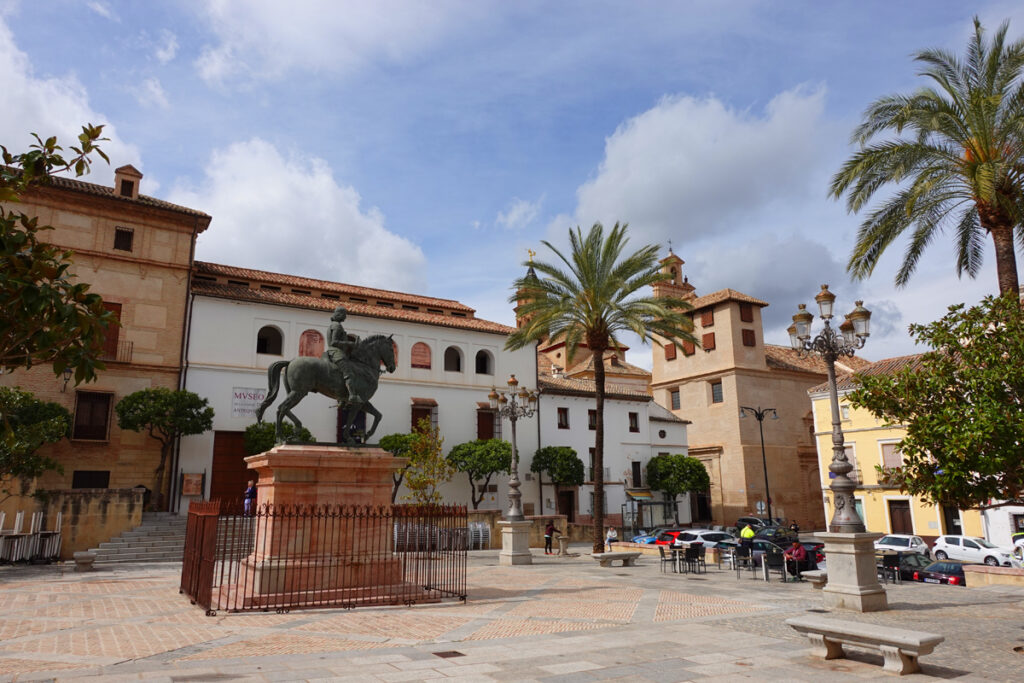
Up to the Alcazaba…
Back at Plaza San Sebastián, go up the steps to the Alcazaba. Getting there will take about 10 minutes. It’s a nice walk: going up some old stairs, arriving at a pretty fountain (Fuente del Toro) and getting fantastic views at Mirador de las Almenillas. You really get an appreciating for Antequera from this spot.
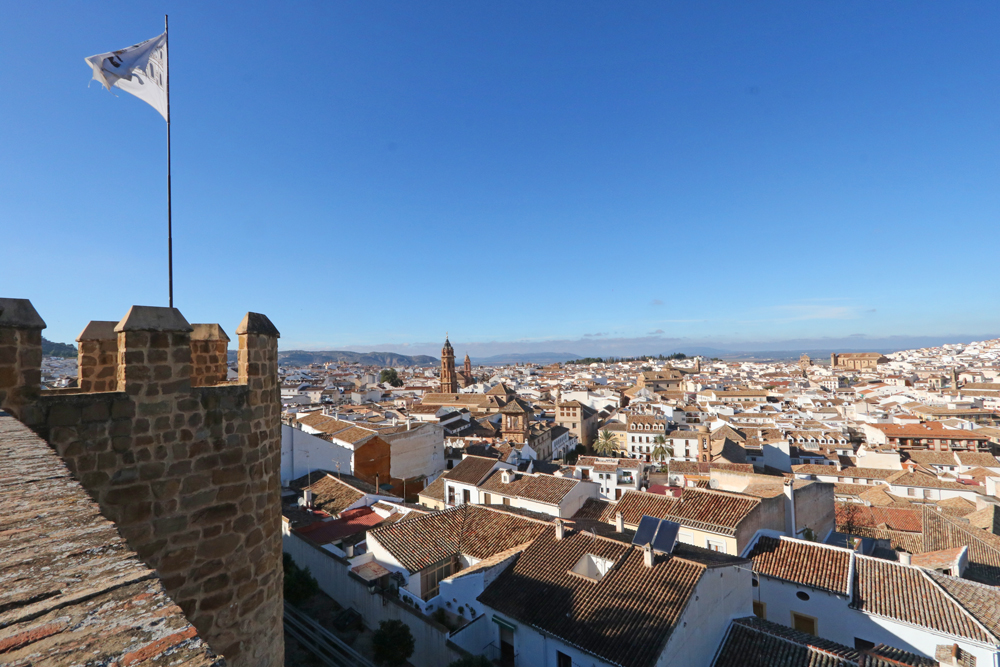
Go through the large arch. This is Arco de los Gigantes. Built in 1585, it is 7 meters tall. Going through, you’ll spot the ex-church of Real Colegiata de Santa María la Mayor. But first visit the Alcazaba (the Moorish fortress) which is to your right when you enter the arch.
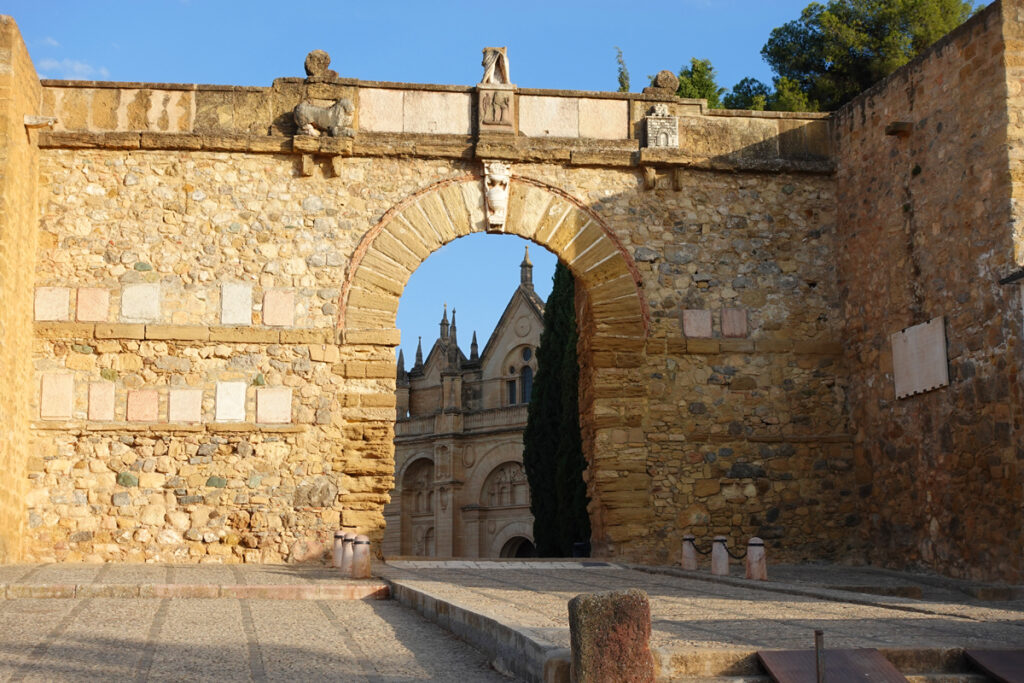
The Alcazaba
Construction of the fortress started in the 11th century when Antequera was becoming an important outpost of the Caliphate. But it was in the 14th century, with the Moors feeling increasingly threatened by the Christian invasion from the north, that the fortress grew to what you see today. The Alcazaba would become a fortress of great strategic and military importance and would play a big role in the battle for the Kingdom of Granada.
I cover the Alcazaba in detail here.
Besides the history, the Alcazaba’s Torre del Homenaje is the highest point in the city and you’ll get spectacular views of Antequera and the surrounding countryside and mountains.
Note: The Alcazaba is free Tuesdays 2 PM – 6 PM. Otherwise it costs 6 Euros/pp
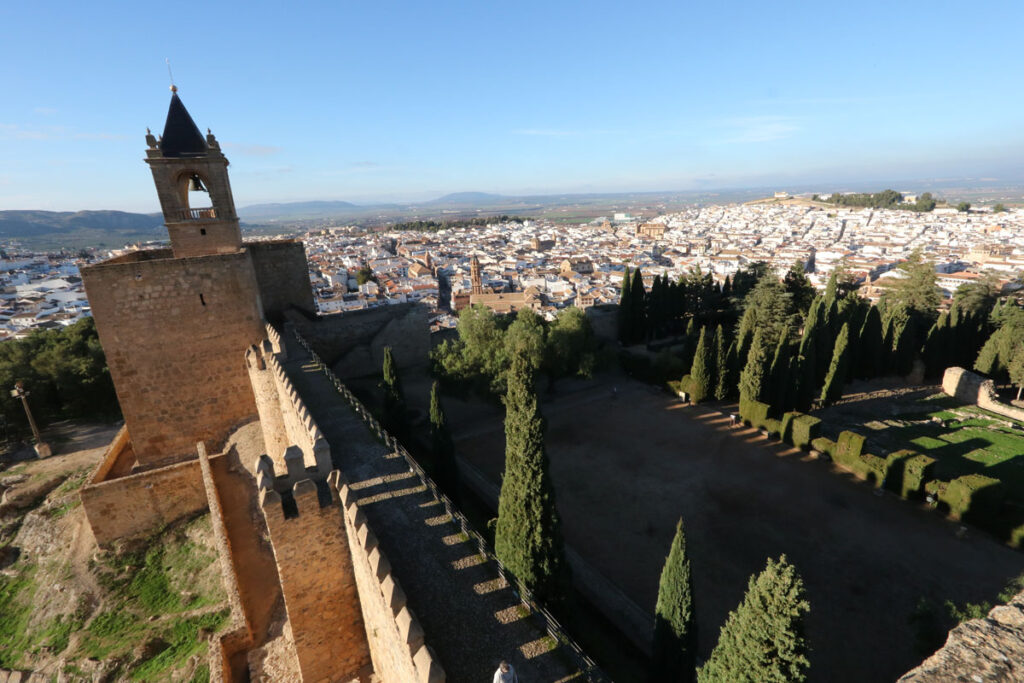
Real Colegiata de Santa María la Mayor
After having finished with the Alcazaba, go see the Real Colegiata de Santa María la Mayor. It’s free with your ticket to the Alcazaba.
In all honesty, it’s more impressive from the outside than in. The church has been decommissioned; it is no longer a church. Inside they store items used during special occasions and festivals. Interesting…but don’t pay to see.
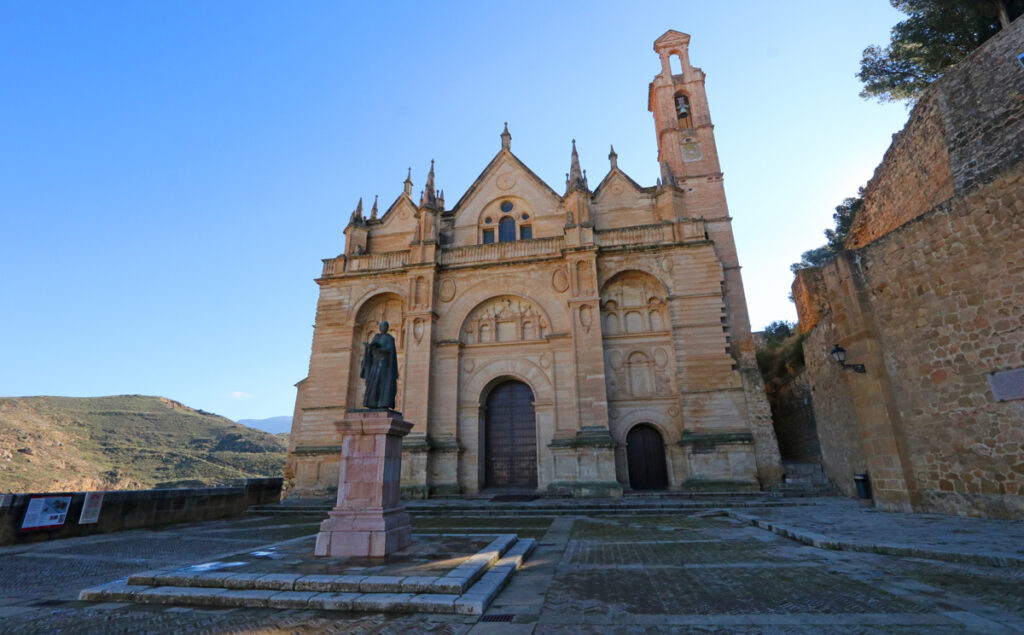
Roman Baths
From the square, you’ll see a viewpoint. Below are the Roman baths found when excavation started here in 1988. These baths were the first proof of the location of ‘Antikaria’, the ancient Roman city. They are thought to date back to the 1st century with additions and improvements done in the 3rd and 5th centuries.
If in a rush, you can go back through the arch to the viewpoint and head towards Iglesia del Carmen (which I’ll get to). But if you have a bit more time I recommend following my instructions below, they’ll add maybe 45 minutes to your circuit but you’ll see a different perspective on the Alcazaba and the geography around Antequera.
The route behind the Alcazaba
Take the little alley to the right of the Real Colegiata de Santa María la Mayor. It’s called Callejón del Aire.
The alley will take you to several lookouts looking over the Sierra de Torcal. It is beautiful and peaceful and one of the reasons we fell in love with Antequera. Continuing on, you walk a gravel road behind the Alcazaba, giving you a different angle on the fortress.
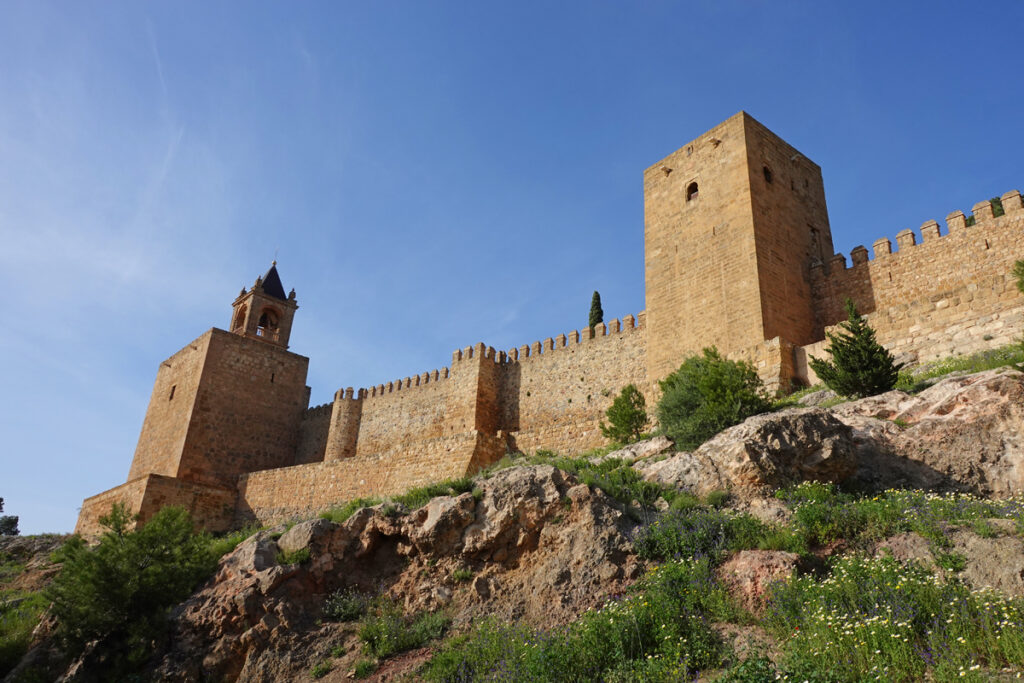
Eventually the route takes you to Plaza Portichuelo. It’s a pretty plaza that’s one of the most photographed locations in Antequera – that’s because of the La Capilla-Tribuna de la Virgen del Socorro or, as it’s more commonly known, La Capilla del Portichuelo. Looking up at this building, you’ll see a beautiful image of the Virgin of Socorro.
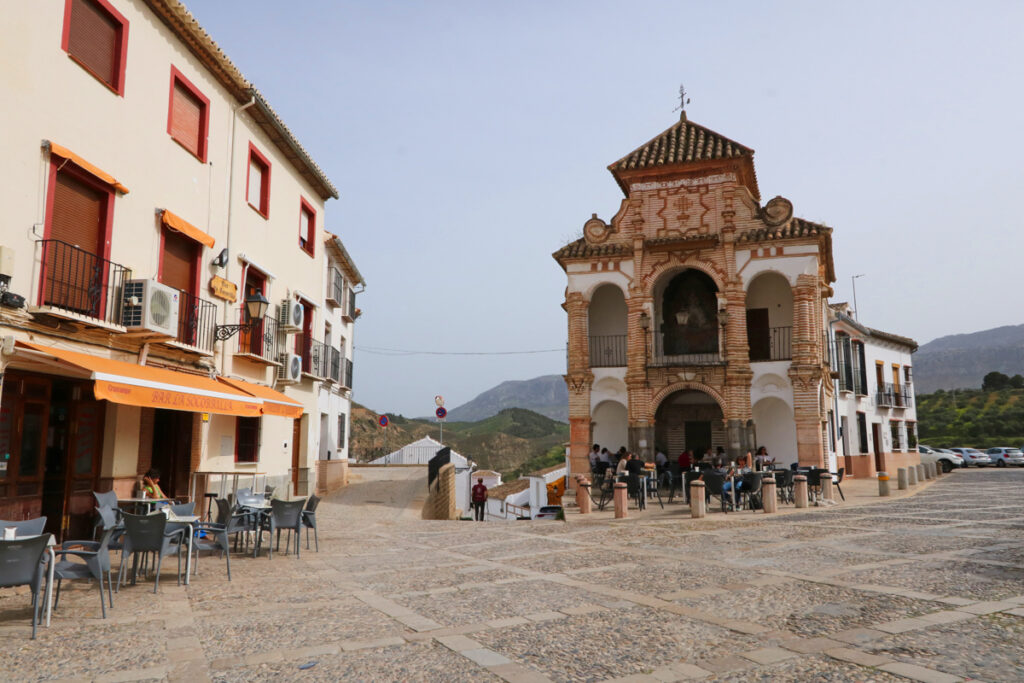
At the base of the chapel is a popular Tapa bar, Bar La Socorrilla. Many people, including visitors, enjoy coming here and having a drink in the lively square.
Note: our favorite tapas bar in Antequera is about 10 minutes away: La Perdiz on Plaza Espiritu Santo. Very inexpensive, excellent food. The bar owner Ana is a nice woman.
Postigo de la Estrella
After Plaza Portichuelo,walk about 5 minutes further until you’re back at the Mirador de las Almenillas. You’ve done a full circle of the Alcazaba.
From here you’ll go towards the Iglesia del Carmen…but first you’ll go through the tiny alley Postigo de la Estrella. I show you on the video how to find it.
The little alley leads to a small gate that was one of the 4 original gates of the city*. Here you’ll see some of the best-preserved walls of the old towns.
*4 gates of the city: Puerta de Estepa (where you started this tour), Postigo de la Estrella, Puerta de Granada (to be covered) and Puerta de Malaga (which I haven’t covered here as it’s a bit of a detour for those limited for time).
Iglesia del Carmen
The 2nd most beautiful church in Antequera in my opinion. It has a huge altarpiece considered one of the most interesting examples of Andalusian Baroque altarpieces from the 18th century.
It’s one of the few churches in Antequera that you have to pay for to get access (2 Euros). But it’s worth it.
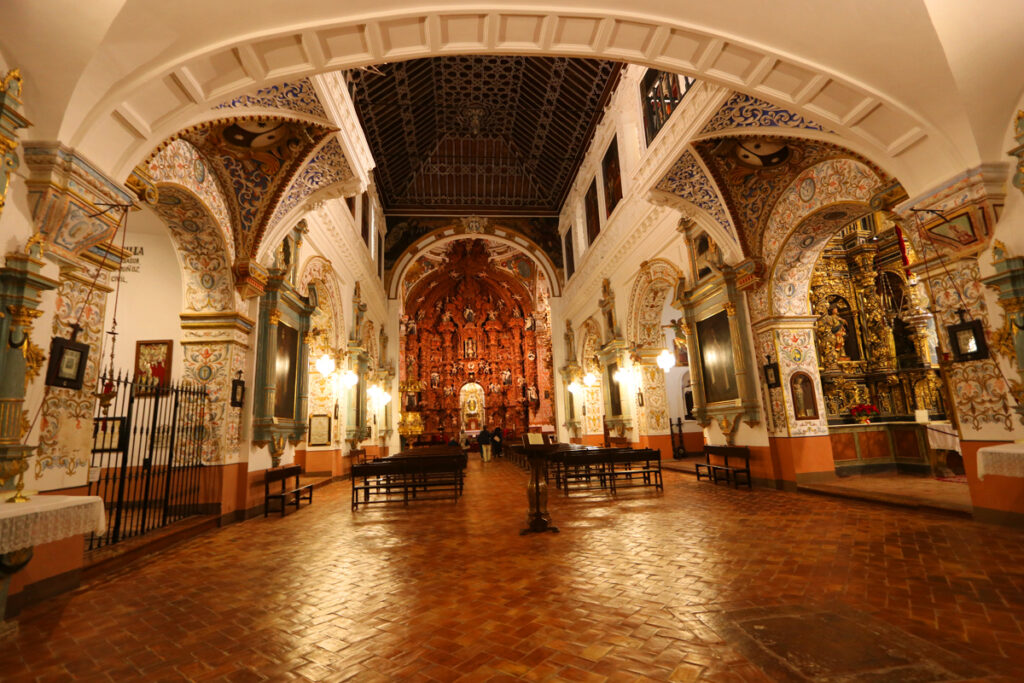
After Iglesia del Carmen, we’re walking downhill back into the town center…
Museo Conventual de las Descalzas
A former convent of the Barefoot Carmelites of Santa Teresa. Built on 1632, it has a beautiful church in it’s interior. The museum features lots of religious art if that’s something you like. For us the highlight was the church, the building, and the nuns who sell cookies.
Mercado de Abastos de Antequera
This is Antequera’s main market and you’ll find the usual market stuff here. You’ll also have tapas restaurants and cafés.
Close by is Antequera’s public library: the Biblioteca supramunicipal de San Zoilo. It occupies the old Monastery of San Zoilo. Go in and have a look at the courtyard with its fountain: go up to the 2nd floor and look up: there’s usually a stork’s nest at the top of the belltower where you might see some giant storks.
Plaza de Santiago, Convento de Belén, Mirador Puerta de Granada
There’s a lot to see within this very compressed area.
Plaza de Santiago is a pretty fountain with a church dedicated to the Virgin of Health. There’s a pilgrims’ hostel there for pilgrims on the Camino Mozárabe de Santiago.
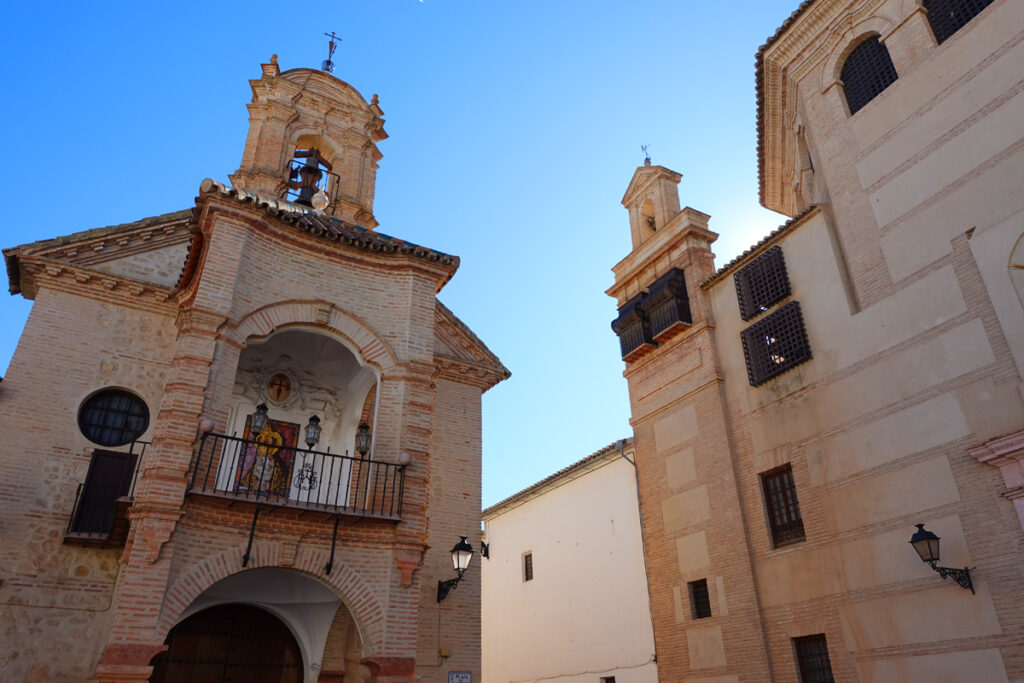
A block down, the Convento de Belén is another stunning church. It was built by the order of Discalced Carmelites in 1628, the order founded by Teresa of Ávila in 1562. Again, bring a euro coin to light up the church. Otherwise it’s free. Buy cookies from the nuns.
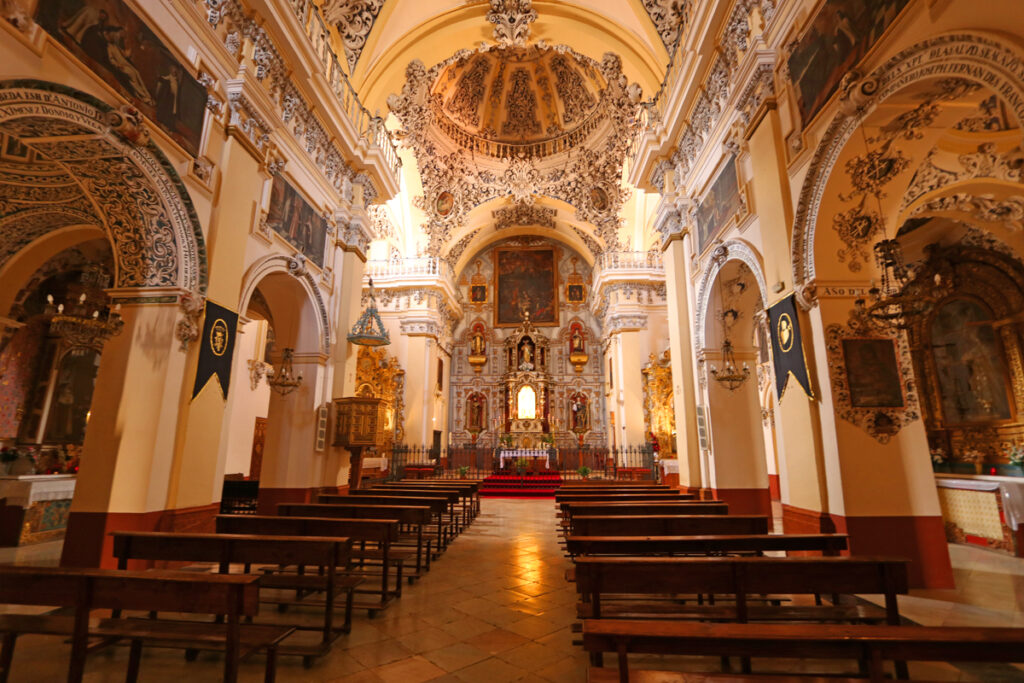
Just down the street is another of the city’s old gates, the Puerta de Granada. Next to it is the Mirador Puerta de Granada, where you have great views looking back at the Alcazaba, Real Colegiata de Santa María la Mayor, and Iglesia del Carmen. It’s one of the top viewpoints in Antequera.
I have a detailed post on all the above attractions here.
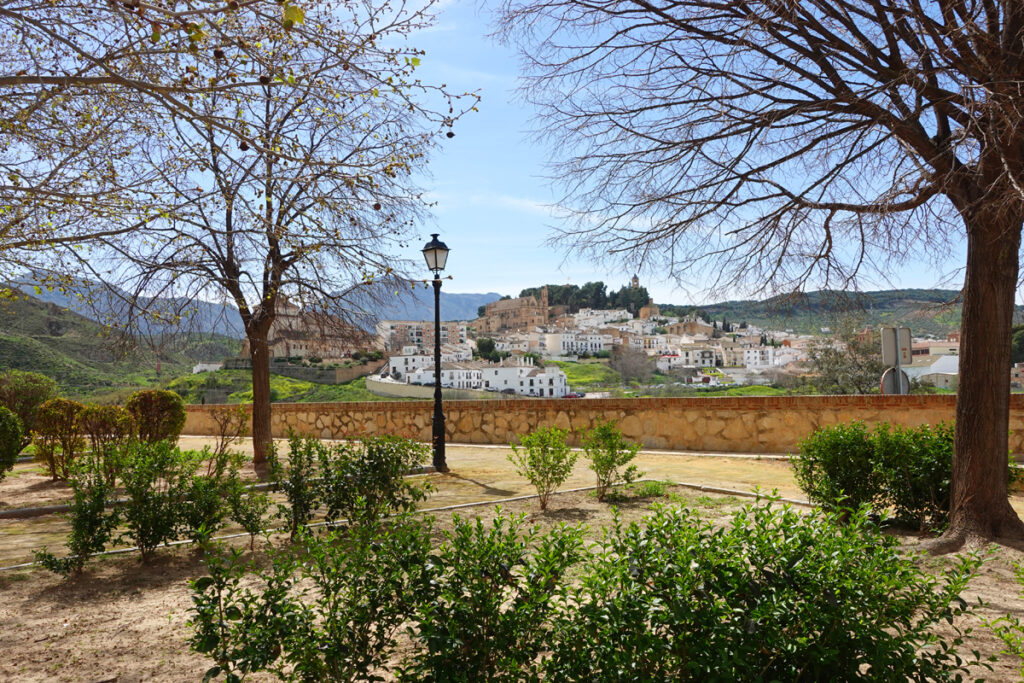
***************
In the video I point out a few other attractions in finishing the loop back towards the ending point at the Parroquia de La Santisima. From there it’s an easy walk to the bus station and the Antequera AV train station.
The above covers most of the sites of Antequera’s downtown if you’re here on a daytrip.
The Dolmens of Antequera
There’s something important that I left out however. It’s a visit to the Dolmens of Antequera which are just a bit outside the old town. I write all about the Dolmens here. If you want to integrate it in my walking tour itinerary, it could come right at the beginning of the itinerary (before making your way to Puerta de Estepa) or at the end after visiting the Mirador Puerta de Granada.
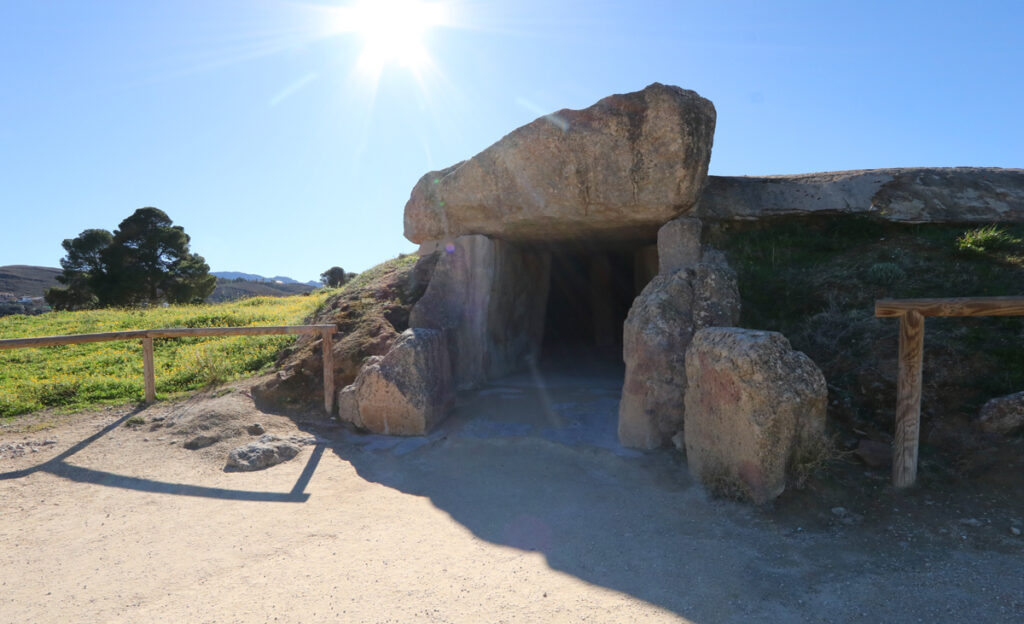
Viewpoints of Antequera
Being a hilly city, Antequera has lots of great viewpoints where you’ll have vistas from different angles. If you like views, have a look at this post on the best viewpoints of Antequera.

Use Antequera as a base
Antequera is a stunning city and gets few visitors compared to cities like Seville, Malaga, Granada, Cordoba and Ronda. In my opinion it’s underrated. We recently had a Canadian couple come to Antequera for a few weeks and they loved it…for them it was a getaway from the mass tourism that is so prevalent in Andalusia. Antequera was for them authentic.
So you can do the self-guided walking tour that I’ve covered above. But better yet, spend at least a few days. Use it as a base to visit El Torcal de Antequera, the Caminito del Rey, or to have a wine tasting tour. Antequera is stunning.
More: The Best Hotels in Antequera
Related: A Do-It-Yourself walking tour of Ronda
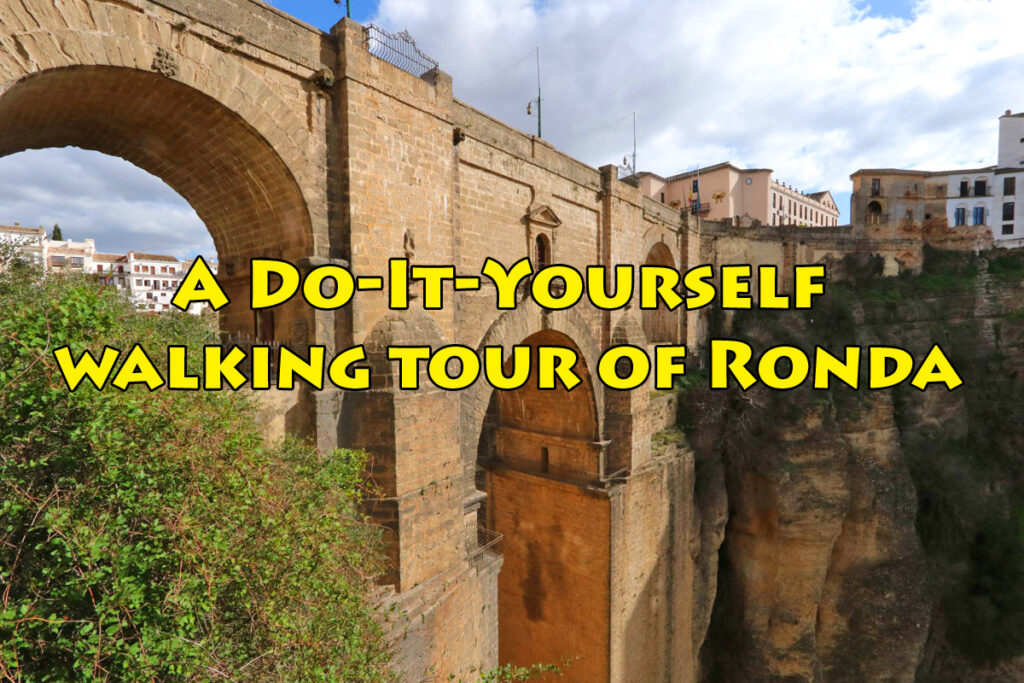
Related: What you need to know about doing the Caminito del Rey
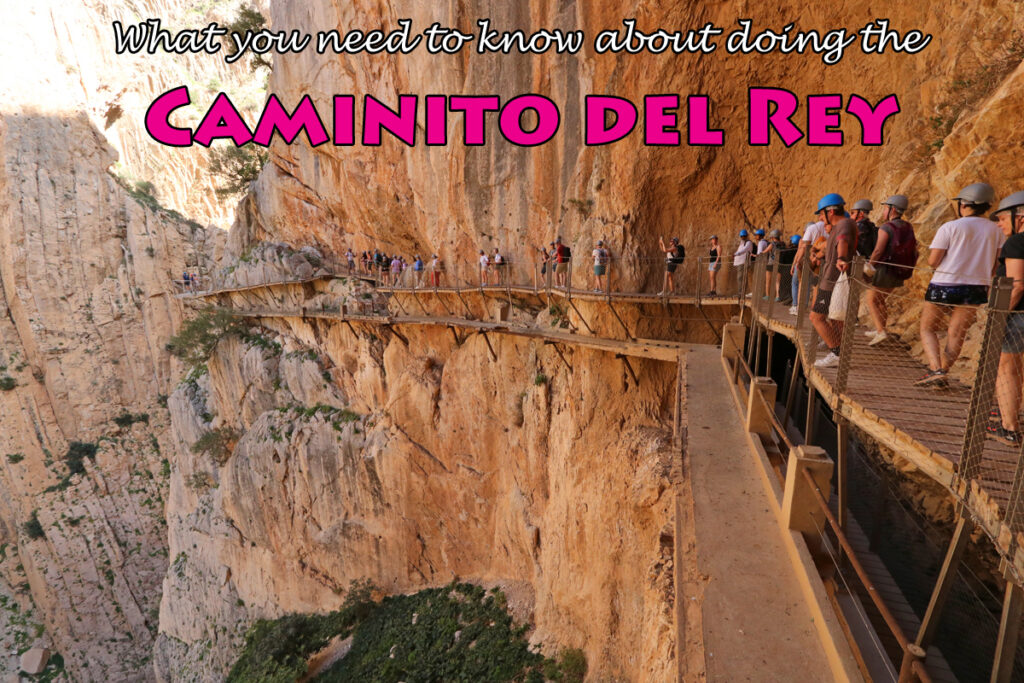

Great intro into Antequera – can’t wait to visit now at the end of August ’25……..any further tips gratefully received. Son’s 20th Birthday on the Friday evening…. best area to go for pre-dinner drinks and dinner???
Hi Matt. Hmm, I’d probably have drinks at Loulu Bistro (at Plaza San Sebastian, they often set up tables right on the plaza in front of the church). You can eat there or, just steps away, go to Taberna el Rincon de Lola (very authentic tapas down the street from the tourist office).
We used the walking tour yesterday (a Saturday in December. ) It was a great tool – easy to follow using Google maps, enjoyed the info about why each stop was interesting. Really made our day in Antequera worthwhile! Toward the end, some of the attractions were closed due to siesta or it being a Saturday. We went to the Dolmens first. It probably would have worked better to start early in the city and see the Dolmens mid afternoon. In any case, we loved Antequera!
Great to hear Robert, thank you for leaving a comment. Always makes me happy when I hear people love Antequera, it should get more recognition.
Thank you, was a very well put together video, just a shame you didn’t have access to a wind muffler to stifle the sound.
So surprised to open my Facebook this morning and find this, we are coming to Antequera for two nights this weekend, staying at the very hotel mentioned. This will really help for our walk around on Saturday, looking forward to it.
Enjoy Anita!